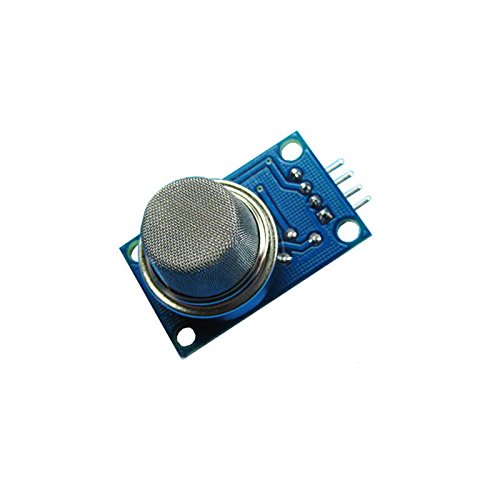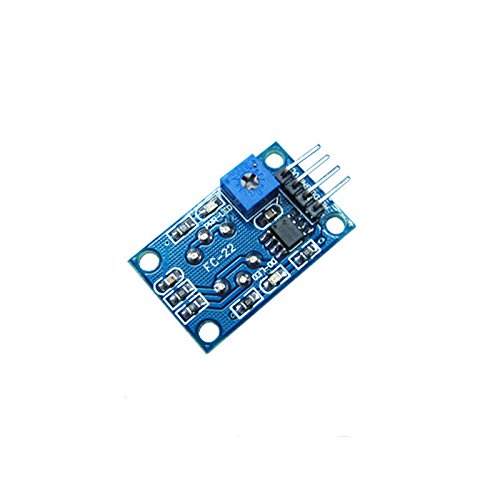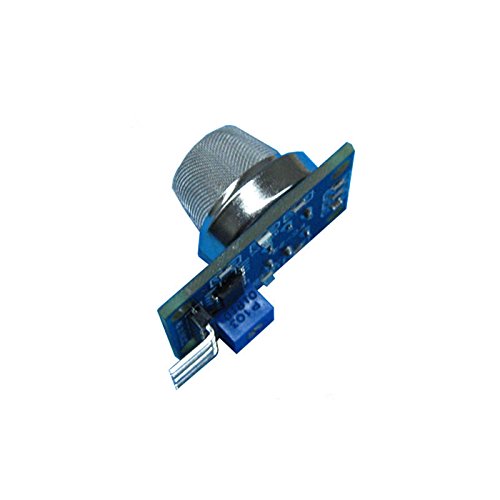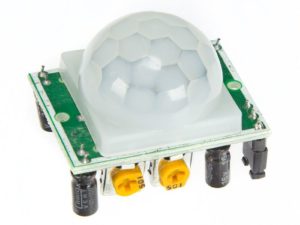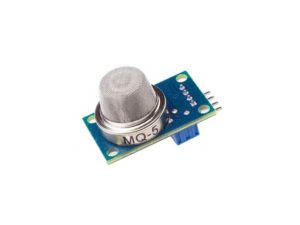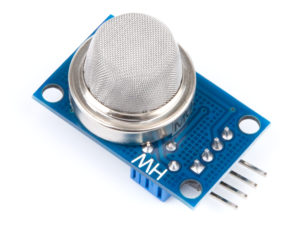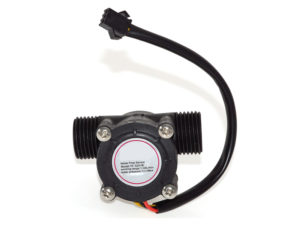Description
This is a simple-to-use hydrogen gas sensor, suitable for sensing hydrogen concentrations in the air. The MQ-8 can detect hydrogen gas concentrations anywhere from 100-10000ppm.
This sensor has a high sensitivity and fast response time. The sensor’s output is an analog resistance. The drive circuit is very simple; all you need to do is power the heater coil with 5V, add a load resistance, and connect the output to an ADC.
Features:
- Main chip: the LM393
- working voltage: DC 5V
- Analog 0 ~ 5 v voltage, the higher the concentration, the higher the voltage.
- Very sensitivity to hydrogen
- Can be resistant to ethanol steam, LPG (petroleum), smoke interference
- Has a long service life and reliable stability
- Has quick response recovery features
Documents:
Getting started with the MQ 8 Hydrogen Gas Sensor Detection Module for Arduino
In this project, we will go over how to build a hydrogen gas sensor circuit with an arduino.The hydrogen gas sensor we will use is the MQ-8 sensor. This is a sensor that is sensitive to effects of hydrogen gas.Hydrogen gas (H2), at room temperature and under standard pressure conditions, is tasteless, odorless, and colorless.
Hydrogen gas is receiving very special attention now because hydrogen is being used as an alternative energy source to operate certain new automobiles coming out in the auto industry now. The chemical energy of hydrogen is converted by a combustion method similar to current engines or in a fuel cell which produces water and electricity by reacting hydrogen with oxygen. Engineers and car manufacturers are researching the possibility of using hydrogen gas as a viable car fuel.
Hydrogen can also be a potential danger to human beings. Hydrogen can be a spark for fires when mixed with air. For this reason, either for its beneficial and its potentially detrimental effects, hydrogen is something that can be very important to monitor and measure.
So having this overview of hydrogen gas, we can see its importance and why we would want to measure the amount of hydrogen gas that may be present.
Connecting the Hardware
there are 4 leads which need to be connected.

There 4 leads are Vcc, Aout, Dout, and GND.
The Vcc and GND leads establishes power for the hydrogen sensor.
The other 2 leads are Aout (analog output) and Dout (digital output). How the sensor works is the terminal AOUT gives an analog voltage output in proportion to the amount of methane the sensor detects. The more methane it detects, the greater the analog voltage it will output. Conversely, the less CO it detects, the less analog voltage it will output. If the analog voltage reaches a certain threshold, it will send the digital pin DOUT high. Once this DOUT pin goes high, the arduino will detect this and will trigger the LED to turn on, signaling that the methane threshold has been reached and is now over the limit. How you can change this threshold level is by adjusting the potentiometer to either raise or lower the level.
Connecting the Hardware
The hydrogen gas sensor circuit we will build with an MQ-8 sensor integrated with an arduino is shown below.

To connect the sensor, there are 4 leads. 2 of them are for power. The Vcc terminal of the sensor connects into the 5V terminal of the arduino board. The GND terminal of the sensor connects into the GND terminal of the arduino. This establishes power for the sensor. The other 2 connections are the analog and digital output of the sensor. These connect to analog pin A0 and digital pin D8, respectively.
Code
The code which we need to upload to the arduino so that it can measure hydrogen gas levels is shown below.
/* MQ-8 Hydrogen Gas Sensor Circuit with Arduino */
const int AOUTpin=0;//the AOUT pin of the hydrogen sensor goes into analog pin A0 of the arduino
const int DOUTpin=8;//the DOUT pin of the hydrogen sensor goes into digital pin D8 of the arduino
const int ledPin=13;//the anode of the LED connects to digital pin D13 of the arduino
int limit;
int value;
void setup() {
Serial.begin(115200);//sets the baud rate
pinMode(DOUTpin, INPUT);//sets the pin as an input to the arduino
pinMode(ledPin, OUTPUT);//sets the pin as an output of the arduino
}
void loop()
{
value= analogRead(AOUTpin);//reads the analaog value from the hydrogen sensor’s AOUT pin
limit= digitalRead(DOUTpin);//reads the digital value from the hydrogen sensor’s DOUT pin
Serial.print(“Hydrogen value: “);
Serial.println(value);//prints the hydrogen value
Serial.print(“Limit: “);
Serial.print(limit);//prints the limit reached as either LOW or HIGH (above or underneath)
delay(100);
if (limit == HIGH){
digitalWrite(ledPin, HIGH);//if limit has been reached, LED turns on as status indicator
}
else{
digitalWrite(ledPin, LOW);//if threshold not reached, LED remains off
}
}
NOTE: IF you get stray ‘\223’ in program The problem is with your “and ” characters. Replace them with ordinary quotes ” and you should be fine.
The first block of code defines all the pin connections of the sensor and the LED. Since the AOUTpin connects to analog pin A0, it is initialized to 0. Since the DOUTpin connects to digital pin D8, it is initialized to 8. Since the LED connects to digital pin D13, it is initialized to 13. 2 variables, limit and value, are also declared. These will be used to store the value of the analog pin AOUT and digital pin DOUT.
The next block of code sets the baud rate and declares the DOUTpin as input and the ledPin as output. This is because the sensor is an input to the arduino for the arduino to read and process the sensor value. And the LED is an output will serves an indicator if the sensor has detected hydrogen.
The next block of code reads the sensor pin AOUT and stores the value in the integer value. It also reads the sensor pin DOUT and stores the value in the integer limit. We then print the hydrogen value, which will be a numeric value ranging from either 0 (no hydrogen detected) to 1023 (maximum level of hydrogen that can be read). We will aslo print the limit which will either be HIGH or LOW. If the hydrogen detected is under the threshold level, the value of limit returned will be low. If the hydrogen detected is above the threshold, the value of limit returned will be HIGH.
If the value is HIGH, the LED will turn on. If the value is low, the LED will remain off.

